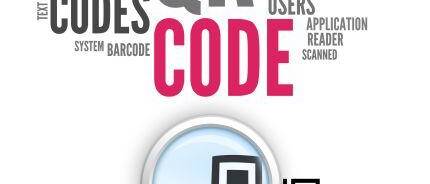A QR code belongs to the group of matrix codes. QR stands for “quick response.” This two-dimensional code allows users to access text and other multimedia content in a format optimized for smartphones.
It consists of light and dark modules that together form a square matrix. Exactly eight modules make up a code word.
These modules do not necessarily have to be black or white; the important thing is that there is a high contrast between the light and dark modules. The code can be recognized as such by means of the so-called finder patterns, which are located in three of the four corners. They are always placed in the same positions in the QR code and thus determine the orientation of the code. A finder pattern is always 7 modules wide. Between these three markings there is a visible line, the so-called timing pattern.
Thanks to built-in error correction, a QR code can still be read even if it is not 100% legible or slightly dirty. This means that the code can still be decoded even if up to 30% of the data is lost. However, the higher the level of error correction, the less data the QR code can hold.
You can find more information about chip cards at Contact chip card systems.
You can find more information about how codes are read at Laser scanners.
Image source: © Ben Chams – Fotolia.com
